Description
This must-have design can be worn on any occasion to boost up your style factor and enhance the ultra beauty factor.
Package Details: 1 flower Gajra
White Jasmine Gajra: A Symbol of Purity and Timeless Elegance
Introduction
The White Jasmine Gajra is an emblem of grace and purity, embodying the timeless beauty of jasmine flowers in a traditional South Asian accessory. Revered for its delicate fragrance and ethereal charm, this gajra is a quintessential adornment that seamlessly blends tradition with elegance. Whether worn for a wedding, a religious ceremony, or a festive occasion, the White Jasmine Gajra stands as a testament to the enduring allure of classic floral adornments.
Historical and Cultural Significance
In South Asian culture, flower garlands, known as “Gajra,” have been integral to religious and cultural practices for centuries. These floral adornments are traditionally used to celebrate auspicious events, such as weddings, festivals, and rituals. They symbolize beauty, purity, and auspiciousness, and their presence is believed to bring blessings and good fortune.
Jasmine, or “Chameli” in Hindi, holds a special place in South Asian traditions. Known for its enchanting fragrance and delicate white petals, jasmine symbolizes purity, love, and divine beauty. Its use in religious ceremonies and rituals is believed to elevate the spiritual atmosphere, making it an ideal choice for sacred occasions.
The White Jasmine Gajra, with its pristine white flowers, is particularly revered for its association with purity and simplicity. It has been worn by brides, worshippers, and celebrants throughout history, reflecting a deep connection to cultural heritage and spiritual practices.
Design and Craftsmanship
The creation of a White Jasmine Gajra involves a meticulous process that highlights the artisan’s skill and attention to detail. The design begins with selecting the freshest jasmine flowers, known for their pristine white color and intoxicating fragrance. These flowers are carefully chosen to ensure that they are of the highest quality, with each bloom exhibiting the delicate beauty and subtle scent that jasmine is renowned for.
Artisans then string or weave these jasmine flowers into a garland, ensuring that the design is both aesthetically pleasing and functional. The flowers are typically threaded onto a thin, flexible wire or string, allowing them to be arranged into a cohesive and elegant garland. The careful placement of each jasmine bloom ensures that the gajra maintains a balanced and symmetrical appearance.
The craftsmanship involved in making the White Jasmine Gajra reflects a deep respect for tradition and artistry. Each flower is positioned with precision, and the overall design is meticulously planned to achieve a harmonious and visually appealing accessory. The result is a beautifully crafted gajra that embodies the timeless elegance and purity of jasmine.
Cultural and Ritualistic Importance
The White Jasmine Gajra holds profound cultural and ritualistic significance in South Asian traditions. Its use in various ceremonies and celebrations underscores its role as a symbol of purity, grace, and divine beauty.
In weddings, the White Gajra is often worn by brides, bridesmaids, and female guests. The delicate white flowers complement traditional bridal attire such as sarees and lehengas, adding a touch of elegance and refinement. The gajra’s presence on such a special day symbolizes the purity and sanctity of the marital union, as well as the beauty and grace of the bride.
During religious ceremonies and festivals, the White Jasmine Gajra enhances the spiritual atmosphere and connects individuals to their cultural heritage. The jasmine flowers are often used to decorate altars, deities, and worship spaces, adding a touch of divine beauty to the proceedings. The gajra’s role in these events reflects the importance of tradition, purity, and reverence in South Asian culture.
Modern Interpretations
In contemporary fashion, the White Jasmine Gajra has been reimagined to suit a variety of styles and settings. Modern designers and fashion enthusiasts have embraced this traditional accessory, incorporating it into a range of looks that blend classic elegance with modern trends.
Fashion shows and editorial shoots often feature the White Jasmine Gajra, showcasing its versatility and ability to enhance both traditional and contemporary outfits. The delicate white flowers and subtle fragrance make it suitable for a wide range of events, from formal gatherings to casual chic settings.
The gajra also finds its place in modern bridal fashion. Brides and fashion-forward individuals use it to create unique and personalized looks, integrating its timeless beauty into modern bridal ensembles. This adaptation demonstrates the gajra’s ability to bridge the gap between traditional elegance and contemporary style.
Care and Maintenance
To ensure that the White Jasmine Gajra remains in excellent condition, proper care and maintenance are essential. Jasmine flowers are delicate and can wilt quickly, so handling the gajra with care is crucial. Store the gajra in a cool, dry place away from direct sunlight and humidity to preserve its freshness and appearance.
Using natural preservatives or floral sprays can help extend the life of the jasmine flowers and maintain their delicate fragrance. It is advisable to wear the gajra for special occasions rather than everyday use to prolong its beauty. Regular cleaning and careful storage will help preserve the gajra’s elegance and ensure that it remains a cherished accessory for years to come.
Conclusion
The White Jasmine Gajra is more than just a hair accessory; it is a symbol of timeless elegance, purity, and tradition. Its delicate white jasmine flowers and intricate design make it a standout piece in South Asian fashion, capturing the essence of grace and beauty. Whether worn for a grand occasion or as a statement of personal style, this gajra continues to enchant with its charm and sophistication. As it evolves and adapts to modern trends, it remains a beloved and meaningful part of the rich tradition of floral adornments, celebrating the purity and elegance of jasmine.


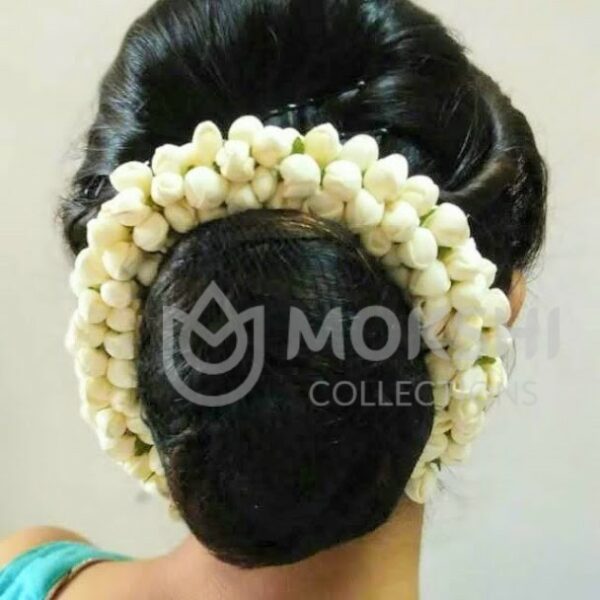


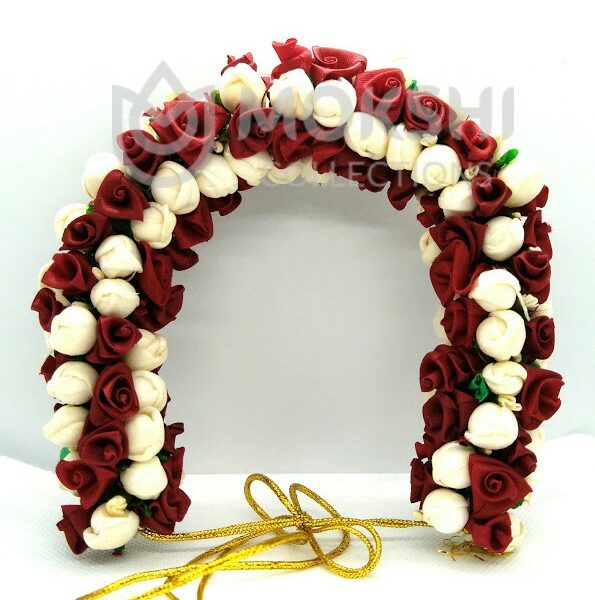
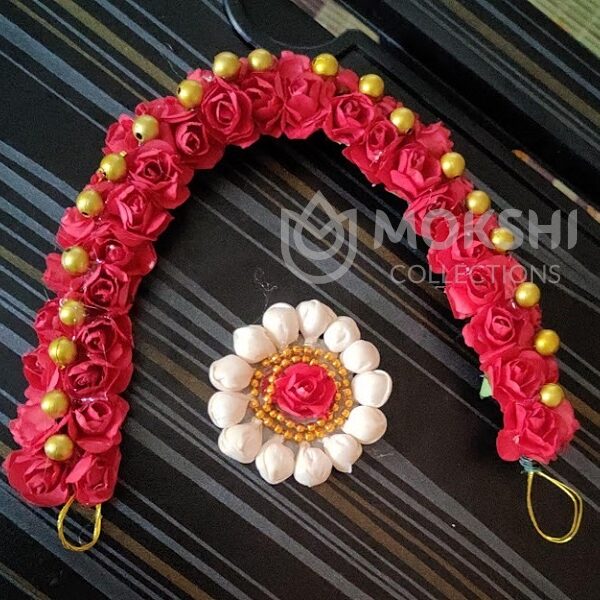
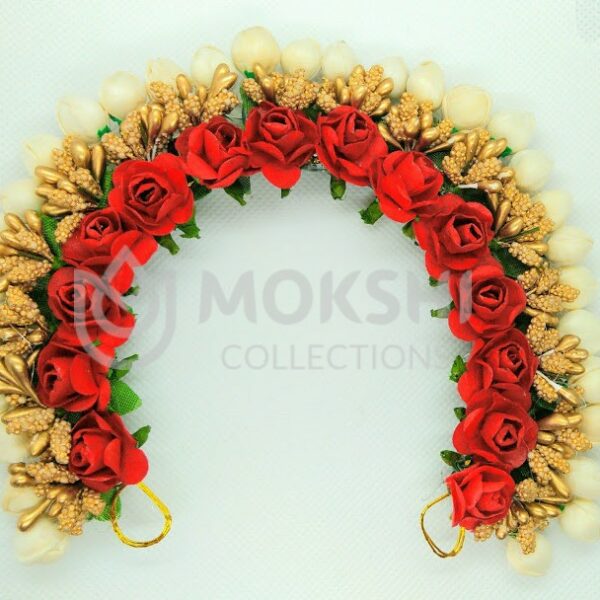
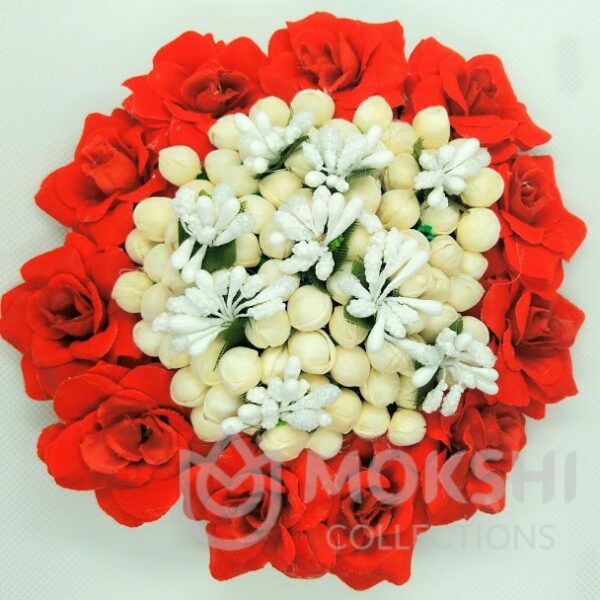
Reviews
There are no reviews yet.